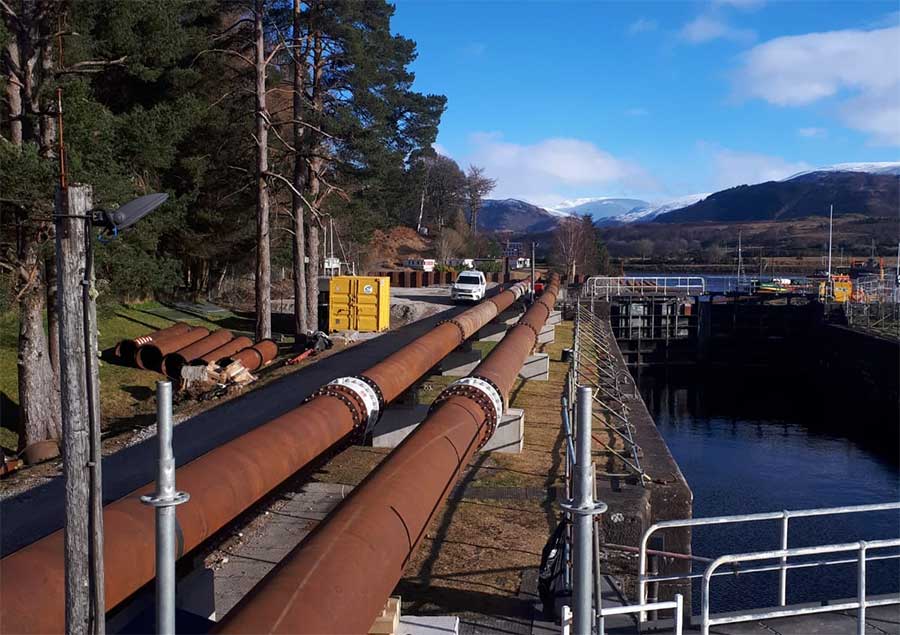Using nothing more than pipes, gravity and specialist technical knowledge, Selwood developed an environmentally-friendly siphoning system to assist with crucial works to replace canal gates in Scotland.
The task
The Caledonian Canal is one of the most popular visitor attractions in the Scottish Highlands, carrying more than 1,400 boats each year. The Gairlochy top gates at its Lock 17 are the largest on the canal and serve as a crucial flood defence, separating Loch Lochy from the canal and the communities to the west. As the gates were 30 years old, they were made a priority for replacement based on age, condition, and risk.
Amco Giffen, carrying out the replacement works on behalf of Scottish Canals, called upon Selwood’s solutions team for support with water bypass of the lock to enable the replacement gates to be installed.
The challenge
In the lock there is a bypass channel which allows the flow to be diverted from Loch Lochy, through the lock gates and into the canal. This is in place to maintain the required water level in the canal and is controlled by a pen stock located on the lock system. Almost 2,000 litres per second has to be forwarded into the canal system to maintain the water levels needed downstream.
A marina below the lock also has to be fed to avoid the damage a drop in water level would cause to boats moored there. Noise was a key concern to avoid disruption to nearby residents, and there was a need to avoid the risk of fuel spillage and minimise the overall environmental impact.
The solution
Using pumps to drain the lock would have been a conventional solution – but the commitment of the Selwood teams to innovation and sustainability resulted in a more environmentally and cost-effective idea. Siphon systems on this scale are rare – especially with such a low head difference between the top and bottom water level. However, Selwood’s specialists carefully studied and modelled the location, even building a scale model to demonstrate the concept was viable. With the case proven, Selwood ran two 800mm pipes from the top of the lock to the downstream canal system.
A Selwood-designed priming system filled the siphon to get the water flowing. The siphon was also fitted with an 800mm gate valve on each set-up to regulate flow rates, measured by two 800mm digital flow meters. The vacuum pressure was continually monitored by two Selwood pressure monitoring panels that enabled the system to start automatically if the vacuum started to drop below the required levels. Once the siphon was up and running, it required very little maintenance with only occasional checks on the priming system. 13,000,000m3 of water was moved from Loch Lochy during the operation.
The result
The cost of operating a traditional pump set-up flows required would have been more than £10,000 a week to run. By comparison, the siphon system cost around £200 per week, saving around £156,000 in total for the duration of the project.



